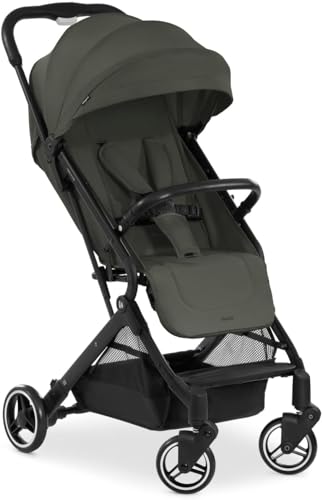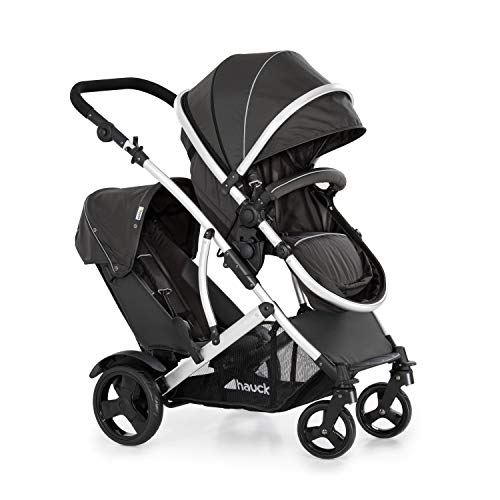What's The Reason? Parent Facing Pram Is Everywhere This Year

2024-09-07 20:37
50
0
본문
 Monitor Your Little One's Wellbeing With a Parent Facing Pram
Monitor Your Little One's Wellbeing With a Parent Facing PramYou can easily check your child's comfort and well-being while they're in a parent-facing pram. This is especially useful during busy days out.
 A study conducted by the University of Dundee found babies in buggies with faces chatted twice as often, had more fun and lower heart rates - all indicators that they were less stressed.
A study conducted by the University of Dundee found babies in buggies with faces chatted twice as often, had more fun and lower heart rates - all indicators that they were less stressed.Peace of Mind
A parent-facing pram is a great way to ensure your baby's safety. The seat will be secured by a five-point harness, which will protect your baby from any accidents.
A pram of good quality has a large basket that can hold all the baby's essentials so that you don't need to think about where the extra items will be placed. The right accessories are crucial to help your baby stay comfortable during their travels for example, a footmuff (check that they're compatible with a five-point harness) and a pram liner to protect against rain or sun.
When you are choosing a pushchair for your new addition it is essential to test drive it and find the right model for your child and you. Find models with swivel wheels for manoeuvrability and adjustable handlebars so that everyone in the family can easily operate it.
If you're worried that your baby might falling out of their buggy, then a safety harness is a must have for all parents. It will stop your baby from getting out of the seat, and is an excellent way to keep them close in case of an emergency.
Some experts for babies recommend waiting until the baby is 6 months old old to use a front-facing stroller however this is contingent on the individual's developmental milestones. But, some babies will be ready to enter the world earlier, specifically when they're curious and eager to explore the world around them.
Parents may be worried that their baby will develop a flat spot in the back of their head when spending time in a pram with a parent facing position however this is not something to be concerned about. Auckland osteopath Julia Griffiths suggests that babies need to spend a lot of time lying down to build their skull muscles, and this is often done by using a carrier in a position that is affixed to the parent along with the supervision of tummy time.
Enhanced Bonding
Whether you have chosen a pram with a carrycot or are opting for a pushchair, the direction that your baby stroller is facing when out and about is something you should consider. It may seem like a minor detail but it can have a huge impact on your baby's development and interaction with you when out and about.
A new study has found that babies who have pushchairs that are away from their parents are less likely to engage, talk or laugh with them than children who have a pushchair that faces the parent. The study included 2,722 children with their mothers in 60 cities as well as another study that concentrated on 20 mothers and their infants. The findings show that babies who sit in a front-facing buggy with their parents are twice as likely to smile at each other than those who sit in an away-facing buggy. The reason for this is that when your child is able to see you, they will be more engaged and excited to share the experience with you, which encourages interaction and bonding.
Face-to-face interaction between babies encourages attachment and develops. It also lets you explain things to them, such as buses or flowers, as well as playgrounds that they might not notice otherwise.
It is crucial to keep in mind that your child must be able sit up on their own before you can convert it into a pushchair that faces toward the front. Babies who are younger than this may find it difficult to adjust and may be more stressed as they have to move from an inward to outward position.
The best way to ensure your baby is prepared for the change is to test them by a doctor. They can determine whether your child's bones and muscles are strong enough to handle the change, as well as whether they have developed sensitive areas. This test is particularly important if you've been using your pushchair since the birth of your child, or have previously had an outward-facing pushchair. A medical professional can help you determine if it is safe for your child to take a seat in a pushchair with car seat that faces toward the front.
Better Eye Contact
The ability to make eye contact with your child is one of the best features of a pram that is facing you. This is especially important for newborns and infants since they are learning about the world around them. It's also a chance to talk to them and play with them which helps to teach them the names of the objects they see and boosts their development in language.
Studies have shown that when a baby is sitting in front of their parents, they're more likely to speak to them and laugh more than when they're away from them. This is because they are absorbing the sounds and visuals of their environment and are able to comprehend what's going on around them. Eye contact also makes it easier for parents and children to communicate. This helps soothe the infant and allows him to relax.
It's also recommended to bring along a travel-friendly toy for your child when they're in their pushchair. These toys are great for stimulating the mind and making children smile. These toys can help your child recognize your voice, which is essential for cognitive development.
Babies are always exploring the world and surroundings. However, as they become older and more active, they may be ready to sit forward in their pushchair. If this is the case, then it's worth looking into purchasing a front-facing pushchair or stroller from our range.
It's recommended to add a footmuff a few months after switching to a pushchair that faces forward. This will help keep your baby warm. Select a style that can be removed and attached when needed and is compatible with the car seat or cot for your baby. You can also purchase a unique travel toy that helps your baby recognize their pram when out and out and about.
Examining your child's head and neck alignment is a great way to make sure that their position for pushing is correct. If the front of the pushchair tilts upwards then their neck and head are pushing against it. This isn't safe.
Easier Monitoring
The reassuring look on your baby's face in a pram that is facing you allows you to observe them better. You can easily see whether they are crying, asleep or cold, or if they have a hat on their head or their socks has fallen off. You can also talk to a baby more comfortably when they are right sitting in front of you. They can see you and hear your voice.
This is particularly important for toddlers and babies who suffer from language or speech delays because it stimulates them. It's also a great way to teach your child about the world around them, such as when you point out flowers or buses. It's also a great opportunity for you to sing to them particularly if they enjoy singing!
Numerous studies have proven that babies who face their parents are more likely to engage with them. This study by Dundee University, for example found that babies spoke twice more in a pushchair facing forward than one facing backward. The same study also showed that babies whose faces weren't visible to their parents' hearts had heart rates that fluctuated more frequently, suggesting that they were stressed and anxious. Heart rates were less agitated and more consistent among babies whose faces they could see.
This does not mean that every child must be changed to a forward-facing stroller immediately. It is best to wait until the child is six months old. It is at this age that their bones and muscles are fully developed and allow them to safely make the transition.
For this reason, many parents choose to keep their babies in a stroller with a parent-facing seat until then. Luckily, there are some excellent strollers and pushchairs out that let you change between two directions to keep your toddler stroller or baby in the same direction for as long as you like. Be sure to verify the compatibility of your chosen buggy or pram with the car seat you are going to use, as this can vary between models.

댓글목록0
댓글 포인트 안내